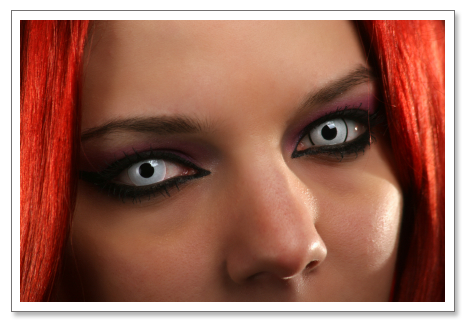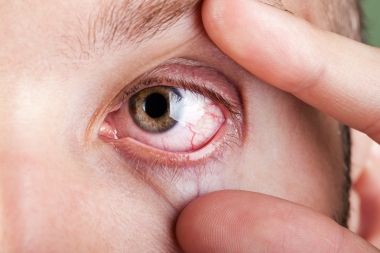
Halloween is a special time of year where children often dress up as their favorite character. Not to be left out, adults often join in on the fun and are inclined to spend more money on costumes than ever before. For extra costume emphasis, some adults might consider over-the-counter (OTC) cosmetic contact lenses. OTC cosmetic contact lenses are a tempting option because they are inexpensive and easily accessible at stores, swap meets and online. Yet, people fail to realize that this final touch to their costume may wreak havoc to the health of their eyes.
Why are OTC cosmetic contacts hazardous?
Contacts are not a one size fits all fit. Think of contacts in terms of shoe sizes. Although you try shoes of the same size, each shoe style fits differently. The wrong size can result in blisters and aching feet. With contacts, an incorrectly fitted lens can cause serious ocular complications including infections, abrasions, ulcers, scarring, permanent vision loss and even blindness. These complications may occur within 24 hours of wearing contacts if not diagnosed and treated quickly by an eye care professional.
Where to purchase cosmetic contacts that are safe for Halloween?
Contact lenses are medical devices that require a prescription from an eye care professional. Schedule an eye exam with an eye care professional to discuss your cosmetic contact options. If a retailer informs you a prescription is not required, be scared. Be very scared! If you suspect illegal contact lens sales, please report these retailers to stopillegalCLs@aoa.org.
How to keep the eyes healthy when wearing prescription cosmetic contacts?
A crucial step in eye health is visiting a licensed eye care professional for an eye exam. You can then obtain a prescription for cosmetic contacts and purchase them from a retailer that requires a valid contact lens prescription. In addition, it’s important to properly clean and care for your contacts and do not sleep overnight with your contacts. You can discuss this process during your exam.
When it comes to OTC cosmetic Halloween contacts, the risk is not worth the benefit. Ocular complications from these types of contacts may occur rapidly. Your eyes deserve the best care possible. One day of fun and silliness with cheap OTC cosmetic contacts may turn into a lifetime of regret. Be safe and choose wisely.
Margie Recalde, OD, FAAO
